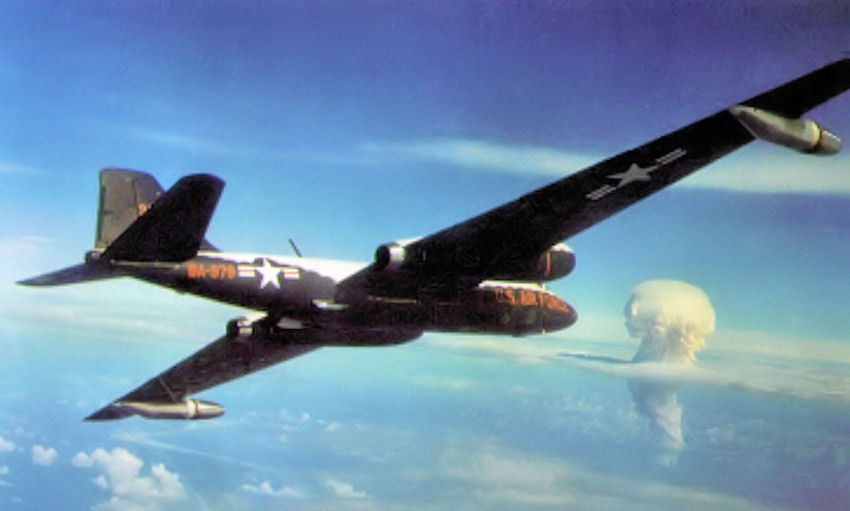A Martin RB-57D Canberra high-altitude reconnaissance aircraft was brought down by an S-75 Dvina surface-to-air missile fired by China’s People’s Liberation Army 2nd surface-to-air missile battalion on October 7, 1959
A Martin RB-57D Canberra high-altitude reconnaissance aircraft, serial number 5643, was shot down above Tong County Zhangjiawan on October 7, 1959, by a surface-to-air missile (SAM) fired by China’s People’s Liberation Army 2nd surface-to-air missile battalion in Beijing. It was the first time an aircraft had been downed by a surface-to-air missile.
Lt. Wang Ying Chin of the Republic of China Air Force was the RB-57D’s pilot; he was killed. Chin appears to have descended too quickly while traveling back to Taiwan. As part of the Central Intelligence Agency’s (CIA) Diamond Lil program, the pilot flew above China. Chinese National pilots were taught to fly Martin RB-57D reconnaissance aircraft as the program was first sponsored by the CIA in 1958.
Six Black Cat Squadron Taiwanese pilots were trained on the B-57C at Laughlin AFB, Texas, then two RB-57Ds were ferried to Taoyuan Air Base, near Taipei, Taiwan in early 1959. They conducted deep penetration reconnaissance flights over the Chinese mainland at the beginning of 1959, photographing ports, airfields, and other military establishments. They were painted white on top and black on the bottom, with red stenciled lettering, and carried the marks of the Republic of China Air Force.

When fatigue issues with the RB-57D wing spars caused the retirement of the remaining aircraft, which was then sent back to the USA, the program came to a stop around 1964. Four Lockheed U-2s were used in their place, but they were all lost during operations over the Chinese mainland.
The RB-57D helped meet the U.S. Air Force’s need for a strategic reconnaissance aircraft that could fly high enough to avoid interception when it entered service in 1956, the same year as the more well-known U-2. Martin produced 20 RB-57Ds in three different configurations: six two-seat electronic reconnaissance aircraft, one single-seat radar mapping aircraft, and 13 single-seat photoreconnaissance aircraft (seven of which could be refueled in mid-air).
Surprisingly, the RB-57F, a B-57 reconnaissance variant with a 122-foot wingspan, was even bigger. General Dynamics began converting 21 B-57 airframes (four of which were RB-57Ds) into RB-57Fs in 1963. The last RB-57F operated by the USAF was retired in the early 1970s, and these aircraft carried out tasks identical to those of the RB-57D.
Photo by U.S. Army and U.S. Air Force

